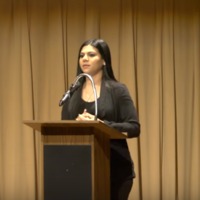
Shandra (Narrative 3)
There are an estimated 57,700 people in modern slavery in the US according to GSI estimates. The US attracts migrants and refugees who are particularly at risk of vulnerability to human trafficking. Trafficking victims often responding to fraudulent offers of employment in the US migrate willingly and are subsequently subjected to conditions of involuntary servitude in industries such as forced labour and commercial sexual exploitation. In 2015, the most reported venues/industries for sex trafficking included commercial-front brothels, hotel/motel-based trafficking, online advertisements with unknown locations, residential brothels, and street-based sex trafficking. Shandra Woworuntu arrived in the US hoping to start a new career in the hotel industry. Instead, she found she had been trafficked into a world of prostitution and sexual slavery, forced drug-taking and violence. It was months before she was able to turn the tables on her persecutors.

Shyima
Egypt is a source, transit and destination country for women and children trafficked for the purposes of forced labour and sexual exploitation. Egyptian children are recruited for domestic and agricultural labour with some of these children facing conditions indicative of involuntary servitude such as restrictions on movement, non-payment of wages, threats and physical or sexual abuse. Families in remote villages across Africa send their children to work in cities for extra money, a custom that has led to the spread of trafficking as wealthy Africans accustomed to employing children immigrate to the US. It is estimated that 10 000 forced labourers in the US are trapped in domestic servitude. Shyima was just 8 years old when her family sold her into slavery to settle a debt. She was then smuggled into the US and held as a domestic slave in California. She was denied medical care, proper nutrition, an education, and her childhood